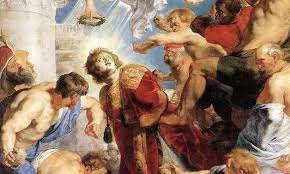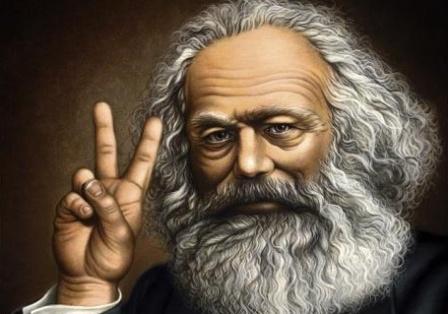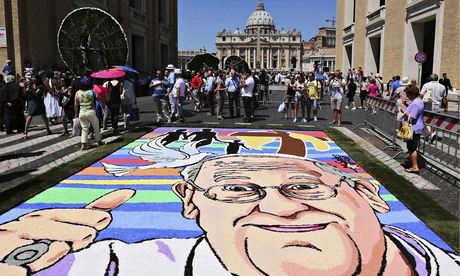
At least some of
those biblical characters commonly designated by commentators as being
“enlightened pagans (or Gentiles)” cannot possibly have been so, without
throwing Mosaïc Law into turmoil. Some examples of this common designation
would be: 1. Melchizedek
(Genesis); 2. Rachab (in the genealogy
of David and Jesus); 3. Ruth of
Moab; 4. Achior (Book of Judith);
5. Job; and, perhaps 6. The Magi of the New Testament (and St. Stephen Protomartyr).
In this article,
we shall be focussing very much upon 4. Achior,
a supposed Ammonite, with just brief notes on the rest of 1-6.
Achior could not have been an Ammonite!
If we are to take
seriously the Book of Judith, and not just relegate it (as do most commentators)
to merely some ‘pious fiction’ genre, then it is impossible that Achior was an
Ammonite. And the same would apply (unless there were a different law for
females) to 3. Ruth, a supposed Moabite (“a prototypical Gentile who must be inspired by the teachings of our Torah”:
http://www.thejewishweek.com/jewish-life/sabbath-week/conversion-ruth).
For, according to Deuteronomy 23:3: “No Ammonite or Moabite may enter the LORD’s
assembly; none of their descendants, even to the tenth generation, may ever
enter the LORD’s assembly”. Yet of Achior it is said, upon Judith’s victory
over the now headless “Holofernes”: “When Achior saw
all that the God of Israel had done, he believed firmly in God. So he was
circumcised, and joined the house of Israel, remaining so to this day.” –
Judith 14.10 (NRSV).
In … Judith 14.10, Achior becomes a proselyte
within the house of Israel. It is interesting to note that at least to the
author of the Book of Judith … they seemed to have no problem in letting Achior
within the house of Israel. … Since it should be noted that Achior isn’t just
any sort of pagan, he’s an Ammonite, a chief leaders, as evidence by Judith
5.5a “Then Achior, the leader of all the Ammonites.”
But if one remembers Deuteronomy 23.3 it reads
that “No Ammonite or Moabite shall be admitted to the assembly of the Lord.
Even to the tenth generation, none of their descendants shall be admitted to
the assembly of the Lord,” So before even going any further, when one looks at
Achior, we see in him one of the … unlikeliest men to convert to Judaism.
Despite the rule in Deuteronomy, the Book of
Judith has Achior converted. There are of course a variety of different reasons
given to why Achior might have been exempted from the rule. Perhaps he was a
special case (as was Ruth the Moabitess), perhaps the prohibition has past,
Achior being past the tenth generation, or maybe the author is even just
expressing the same “universalism,” of the book of Jonah. ….
In any case, despite who Achior is racially, the
author of Judith clearly wishes for him to be seen in the light of the other
righteous Gentiles of the bible. … Achior is said to believe “firmly,” or
“exceedingly, the greek word being σφόδρα which Crowley say “must mean ‘with
all his heart,’”…. Thus Achior is indeed a genuine conversion, moreover he
moves from the simple “God fearer,” sort of Gentile and now into full
proselytism, and hence has “bound himself,” the laws which accompany that. …. So
that in spite of all the difficulties which Achior brings, he becomes a
symbolic invitation to other would be converts, to the author, Achior is not
one secluded case, but instead a representative of all gentiles who would wish
to come to faith in the God of Israel. …
[End of quote]
This interpretation, we would suggest, is not the answer. The complete story
of Achior is to be found only in the Catholic Bible. Providentially, we
Catholics have also for this very same
historical period the Book of Tobit, whose Vulgate version likewise tells
of this Achior (11:20: …. veneruntque Achior et Nabath consobrini Tobiae gaudentes …), otherwise called Ahikar.
Now, Achior (or Ahikar) was Tobit’s very nephew (Tobit
1:21-22 GNT):
[The Assyrian
king] Esarhaddon … put Ahikar, my brother Anael’s son, in charge of all the
financial affairs of the empire. This was actually the
second time Ahikar was appointed to this position, for when Sennacherib was
emperor of Assyria, Ahikar had been wine steward, treasurer, and accountant,
and had been in charge of the official seal. Since Ahikar was my nephew, he put
in a good word for me with the emperor ….
The Tales
of Ahikar (var. Ahiqar), the inspiration for Æsop and Sinbad, are
famous in literature. This Ahikar was celebrated in the ancient Near East for his outstanding
wisdom. Intriguingly,
some of his sayings were appropriated by ‘Mohammed’ and inserted in
various Sura of the Koran (http://archive.org/stream/TheStoryOfAhikar/Ahikar_djvu.txt).
But Ahikar was no more an Assyrian sage than he was an
Ammonite. He was presumably, like his uncle Tobit, an Israelite from the tribe
of Naphtali.
What pagan
Ammonite would have been able to rattle off the history of Israel so
unhesitatingly as Achior (in an historical summary reminiscent of St. Stephen’s
to the Sanhedrin, Acts 7:2-47) was able to do when asked by “Holofernes”: ‘… tell
me about the people who live in these mountains. Which cities do they occupy?
How large is their army? What is the source of their power and strength? Who is
the king who leads their army? Why have they alone, of all the people in the
west, refused to come out and surrender to me?’ (Judith 5:3-4, 6-19)
This was
the Achior who, though belonging to a wholly apostate tribe, except for the
pious Tobit (‘But my entire tribe of Naphtali rejected the city of Jerusalem
and the kings descended from David’, Tobit 1:4), had latterly come under the
influence of his goodly uncle who no doubt reinforced in the mind of the young
nephew all the traditions of Israel and its history. The connection of Achior
with “Ammonite” in the Book of Judith is indeed problematical - though in
Judith 6:5 he is differently linked, by “Holofernes”, with Ephraïm, “Achior, you and your Ephraimite soldiers”. Ephraïm (a designation for northern Israel) would
indeed be more fitting for a relative of Tobit’s.
In a recent article, “Ahikar Part
Two: As a Convert to Yahwism” (http://www.academia.edu/7067422/Ahikar_Part_Two_As_a_Convert_to_Yahwism
for Part One, see: http://www.academia.edu/7048703/Ahikar_or_Achior._Part_One),
Damien Mackey rejected the possibility of Achior’s having been an Ammonite foreigner:
… there now arises that
problem with my actual reconstruction of Achior as an Israelite in the
Assyrian army, and it is this verse: “Then Achior, the leader of all the Ammonites,
said to [Holofernes] ...” (5:5). Achior is said in this verse to
have been an “Ammonite”; a matter we discussed in some detail … when
considering why [the Book of Judith] was not accepted into the Hebrew canon.
Whilst this does immediately loom as a major problem, there is one factor – apart
from what has already been said about Achior – that makes his being an
Ammonite highly unlikely, and this is that Achior will later, in
[Judith] 14, be converted to Judaïsm and will be circumcised. The author of
[Judith], who is an absolute stickler for the Mosaïc Law, and who writes in fact
like a priest or Levite … would hardly have countenanced so flagrant a breach
of the Law as having an Ammonite received by pious Jews into the assembly of
faith, when this was clearly disallowed by Moses (Deuteronomy 23:3, 4).
Judith herself, who would so
scrupulously observe all of the religious ordinances of the Law even whilst in
the camp of the Assyrians [Judith] (… 12), would hardly (if she were real) have
been a party to this forbidden situation.
[End of quote]
So, of whom was
Achior actually the “leader” when he, prior to his conversion, accompanied
“Holofernes” with the massive Assyrian army to Israel? Very likely, the
Elamites (with whom Ammonites may have later been confused), since Tobit tells
us of his blindness that (2:10): “Ahikar [Achior]
… took care of me for two years, until he left for Elam”. We think that there
is a verse in the Book of Judith (1:6) that echoes this, thereby binding
together the eras of Tobit and Judith. We previously wrote on this (Elam and Elymaïs being
synonymous):
There is
a gloss later added to the Vulgate version of the Book of Judith which tells
that "Arioch [Erioch] ruled the Elymaeans" (1:6). "Arioch"
is unknown. Obviously a copyist had failed to realize that this person, given
as Arioch [or Erioch], was the same as the Achior who figures so
prominently throughout the main story. The copyist, it seems, should have
written: "Achior ruled the Elymaeans". From there it is smooth
running to make the comparison:
"Achior
... Elymaeans"
(Judith); "Ahikar ... Elymaïs" (Tobit).
Typically biblical
commentators, recalling that there was a foreign king, “Arioch”, way back in
the Book of Genesis (14:1), whilst denying any real historical credence to the
characters in the Book of Judith, ascribe mention of an Arioch in the latter to
something like ‘the author’s fondness for biblical archaïsms’. In their mind,
Judith, Achior, Arioch, never really existed.
For us, though, Achior
was the nephew of Tobit, an Israelite from the tribe of Naphtali.
Pre-conversion,
Achior also figures famously in 2 Kings, 2 Chronicles and Isaiah, as the brash Rabshakeh military officer whom we
already introduced on p. 19. Thus Isaiah 36:2: “And the King of Assyria sent
the Rabshakeh from Lachish to King Hezekiah at Jerusalem, with a great army”.
Not surprising
that “the King of Assyria”, Sennacherib [= Book of Judith’s “Nebuchadnezzar”],
might have selected this highly-talented Israelite to harangue the Jews in
their own language. This was Achior as a rising prodigy in Assyrian captivity
before his conversion, later, thanks to Judith’s bringing to a shuddering halt
the Assyrian war machine at Bethulia (modern Mithilia).
He was not a
foreigner to Israel, but apparently a “leader” (governor and captain) of
foreign contingents in the mighty Assyrian army.
Notice how, in
contemporary scholarship, Israel keeps getting squeezed out. ‘No one’ speaks
Hebrew, instead it is Aramaïc! The same thing is happening in archaeology. Some
time ago, professor Gunnar Heinsohn of the University of Bremen wrote that:
Mainstream scholars are in the
process of deleting Ancient Israel from the history books. The entire period
from Abraham the Patriarch in the -21st century (fundamentalist date) to the
flowering of the Divided Kingdom in the -9th century (fundamentalist date) is
found missing in the archaeological record.
Even back in the
days of Paul and Barnabas, the pagan Greeks were bent on appropriating these famous
Jews into their own pantheon (Acts 14:12): “They decided that Barnabas was the
Greek god Zeus and that Paul was Hermes, since he was the chief speaker”.
Anyway, getting
back to the main thread of this article, there follow some brief comments on those
other (apart from Achior), supposedly Gentile, biblical characters (1-6):
From Melchizedek to the New Testament
1.MELCHIZEDEK, we
suggest, was not an enlightened Canaanite priest-king at all, a pagan. The
great man of faith, Abram (Abraham) was hardly going to submit to being blessed
by a pagan priest (Genesis 14:19). No, Melchizedek was the great Shem, son of
Noah, as according to a Jewish tradition (See our: http://amaic-abraham.blogspot.com.au/2012/09/melchizedek-was-shem-son-of-noah.html As Shem, Melchizedek was the archetypal S[h]EM-ite (Semite).
2.RAHAB. The
Canaanite harlot, Rahab, whose “faith” both Paul (Hebrews 11:31) and James (2:25)
praised, incidentally (like Jesus with the Roman centurion, Luke 7:1-10), was
surely not the same woman as she who became the ancestress of David and Jesus,
despite what is universally taught. To have been so would once again have meant
a flouting of the Mosaïc Law, in this case Deuteronomy 7 (1-3): “When the Lord
your God brings you into the land you are entering to possess, and drives out
before you many nations—the Hittites, Girgashites, Amorites, Canaanites,
Perizzites, Hivites and Jebusites … you must destroy them totally. … Do not
intermarry with them”. R. K Phillips, in “The Truth About Rahab”, has argued
for Rahab the harlot to be distinguished from the Israelite woman, Rachab (note
different spelling).
4.ACHIOR. Was most
certainly an Israelite, as we have already discussed at length. The mistaken
notion that Achior was an Ammonite chief is perhaps the primary reason why the
Jews have not accepted the Book of Judith as part of their scriptural canon.
5.JOB We have
firmly identified Job as Tobit’s very son, Tobias, in “Job’s Life and Times”, http://www.academia.edu/3787850/Jobs_Life_and_Times Thus Job was not an enlightened Edomite (nor an Arabian sheikh), as is often
thought, but a sage of Israel, a cousin of Achior.
6.THE MAGI. If
Blessed Anne Catherine Emmerich be correct that: “The kings [Magi] were descendants
of Job” (http://www.spiritdaily.net/emmerichmanger.htm),
then we might conclude that the Magi’s “East” (Matthew 2:1) was the same as
that of Job (1:3): “He was the greatest man among all the people of the East”. With
our modern tendency to think globally, we usually pitch the Magi all the way
east to Persia – for instance, enlightened Zoroastrians (those “enlightened
pagans” once again). But was even Zoroaster an enlightened pagan? - for there are
Syro-Arabic traditions that Zoroaster was the biblical scribe, Baruch. We think
it conceivable that the Magi, as potential Transjordanian Israelites, may not
have had to travel any further than the same approximate “east” wherein Job had
dwelt, in the land of Uz (Transjordanian Bashan).
A Concluding Thought on St. Stephen Protomartyr
His address to the Sanhedrin reminded us a bit of Achior’s address to
“Holofernes” (refer p. 24).
Could Stephen, so knowledgeable in the history of Israel, though thought
to have been a Greek, actually have been an Israelite - just as Achior, so
knowledgeable in the history of Israel, but thought to have been an Ammonite,
was most certainly an Israelite?
Having a non-Jewish name, like “Stephen” (Greek), does not necessitate
that one was not Jewish (or Israelite). Acts 18:2, for instance, introduces “a
Jew named Aquila” (Latin for “eagle”). Stephen is never explicitly called a
Greek, and, of the wise seven amongst whom he is listed, only “Nicolas from
Antioch” is said to have been “a convert to Judaism” (6:5).
Our tentative thought is that Stephen was the Nathanael of whom Jesus had
said (John 1:47): ‘Here truly is an Israelite in whom there is no deceit’. That
Stephen was a true Israelite who recounted before the Sanhedrin both the
history and the meaning of Israel.
Again, “Jesus said [to Nathanael], ‘You believe because I told you I saw
you under the fig tree. You will see greater things than that’. He then added,
‘Very truly I tell you, you will see heaven open, and the angels of God
ascending and descending on the Son of Man’.” (vv. 50-51). And so it happened
(Acts 7:55-56): “But Stephen, full of the Holy Spirit, looked up to heaven and
saw the glory of God, and Jesus standing at the right hand of God. ‘Look’, he
said, ‘I see heaven open and the Son of Man standing at the right hand of God’.”
And did priest Caiaphas
see it too? (Cf. Matthew 26:64)




















